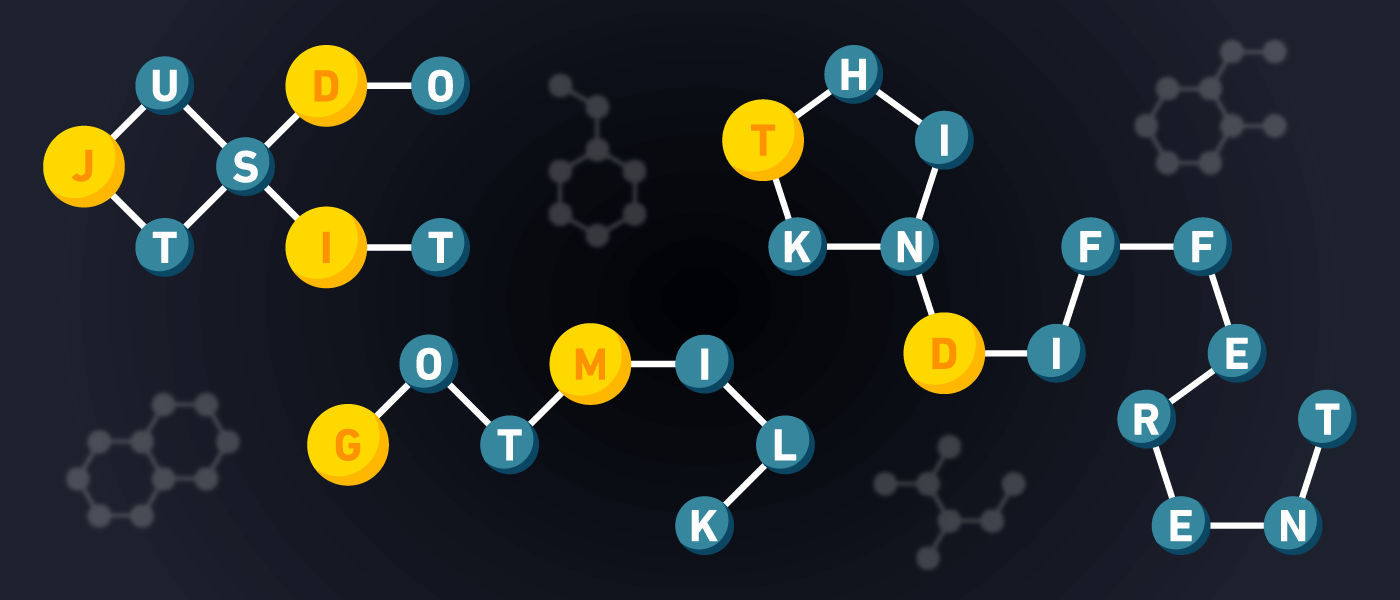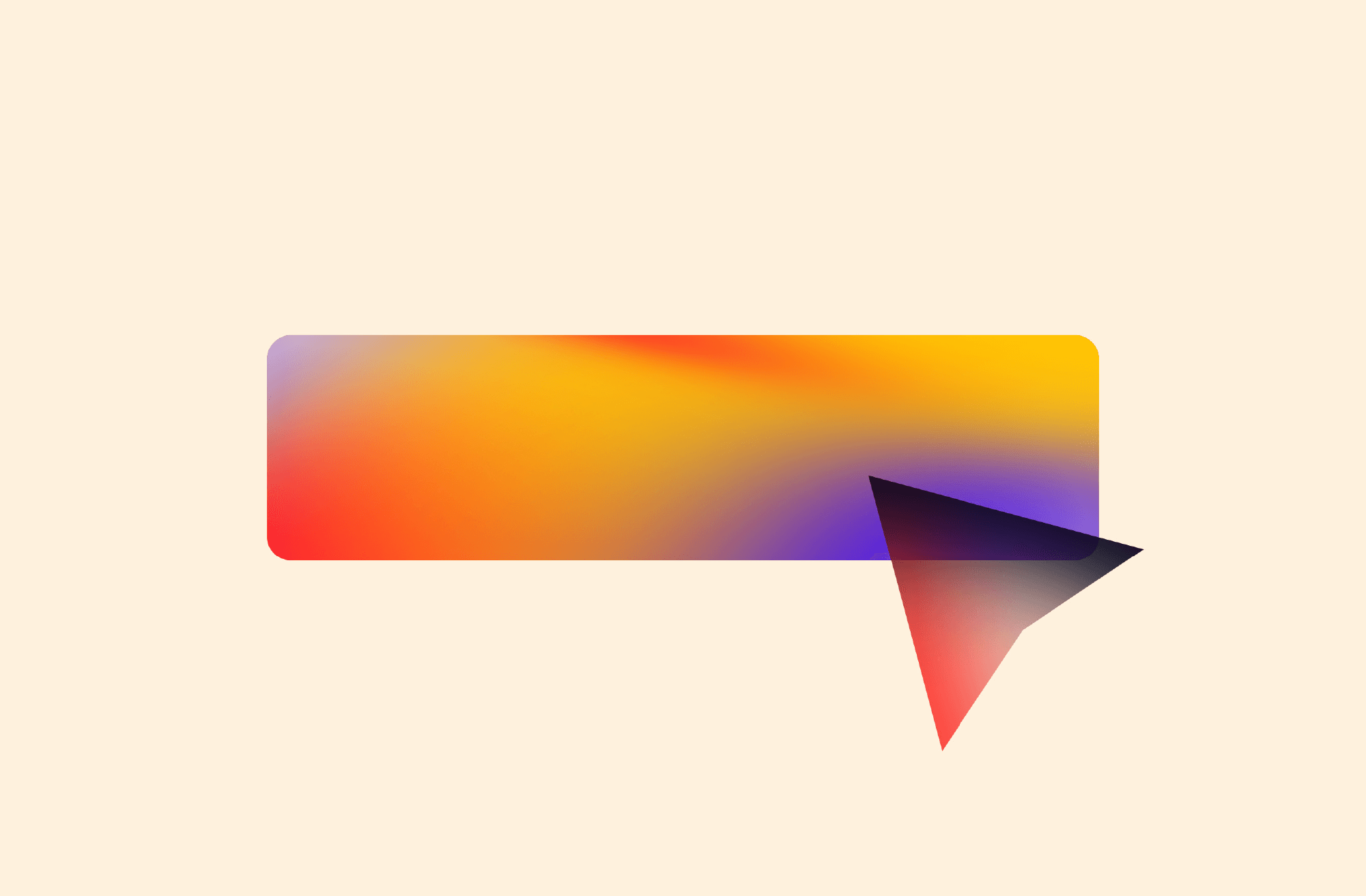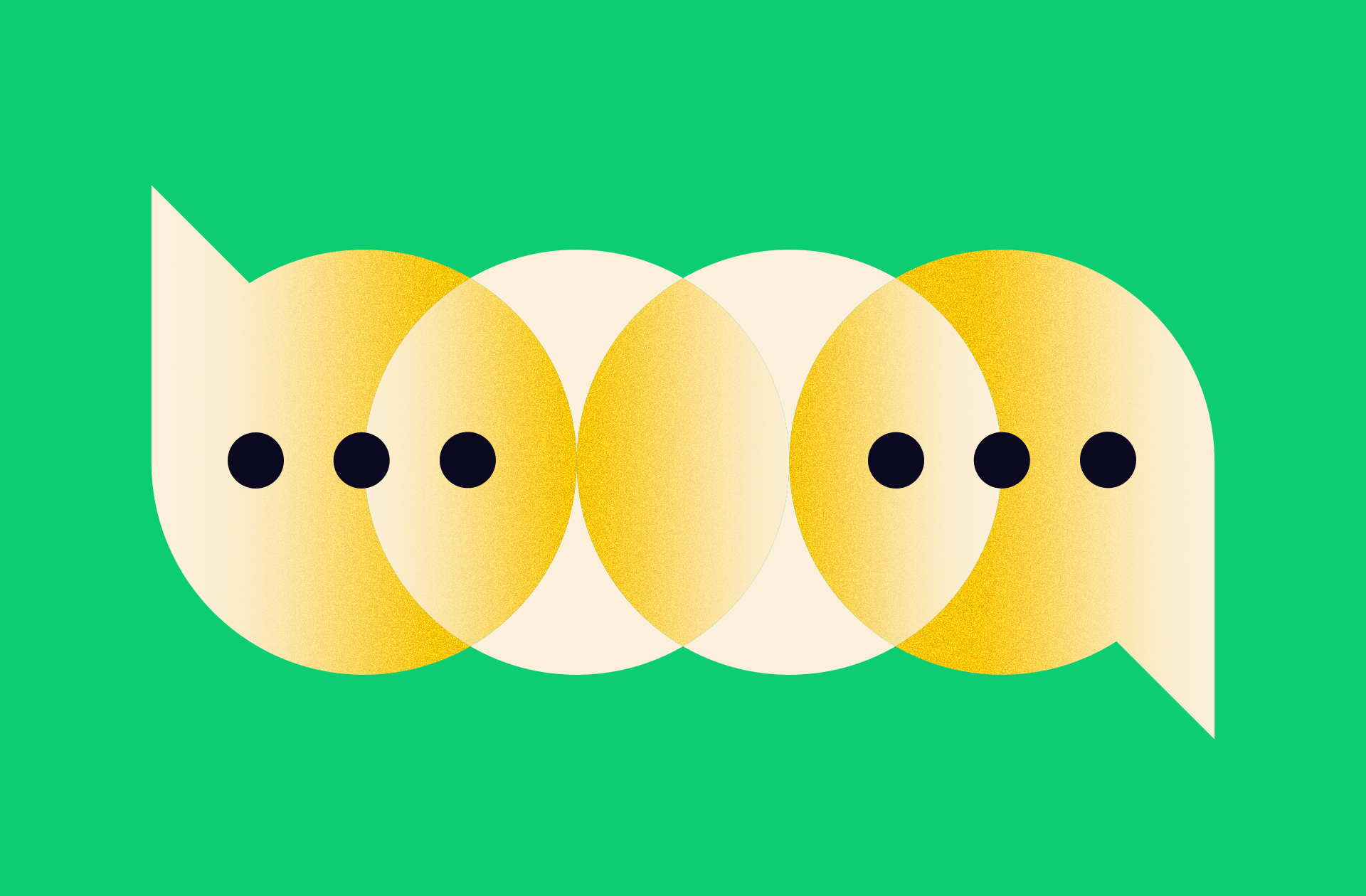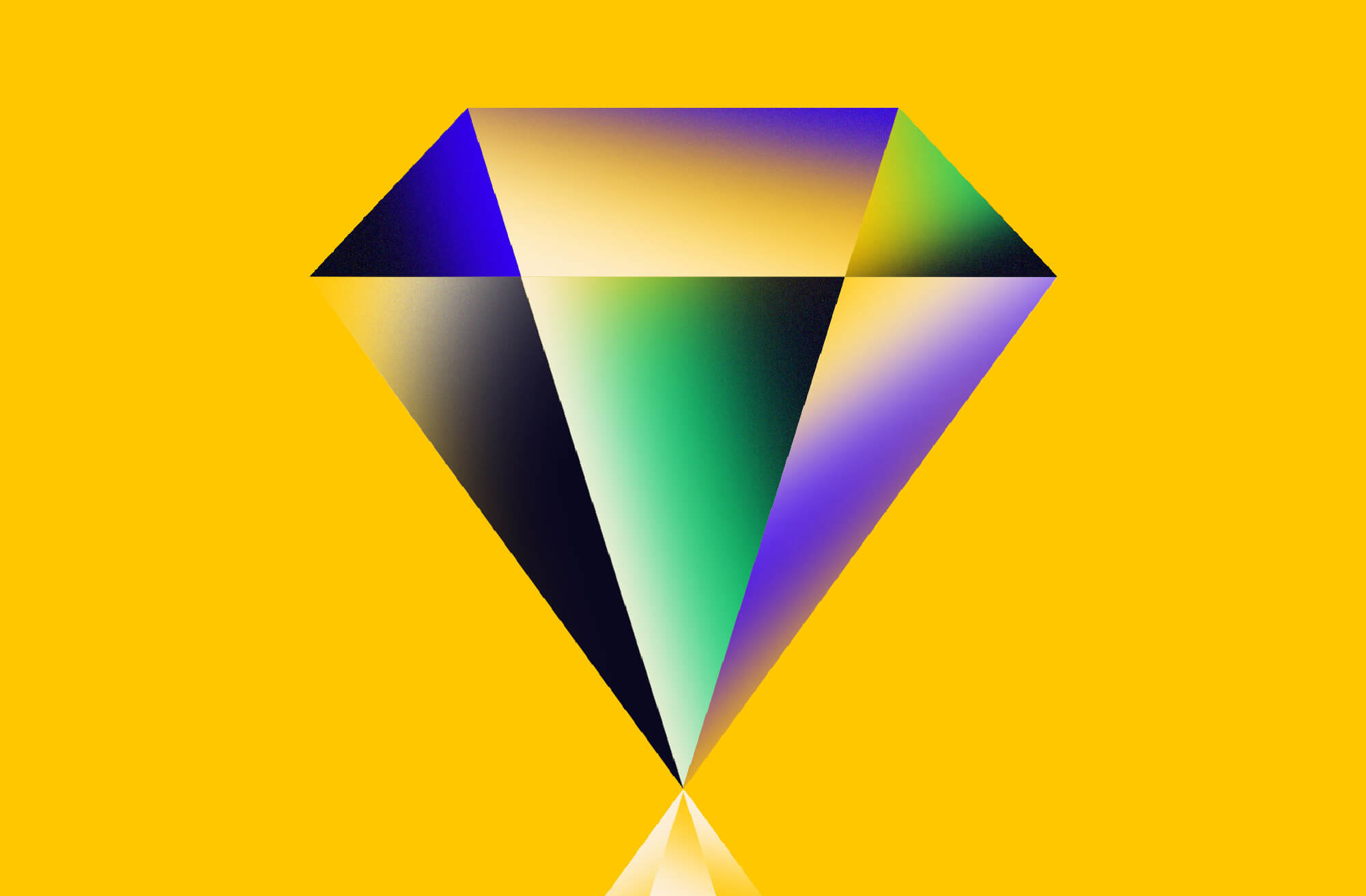Coming up with a great tagline isn’t like the movies. There’s no magical Don Draper to feed you the perfect line. It’s usually a long slog through brainstorms and iterations. And although it’s frustrating, it’s necessary to find the right one. That said, you don’t totally have to fumble around in the dark.
Luckily, researchers are slowly discovering the secrets of a great tagline, making your life a lot easier. So what really makes a great tagline? How do you come up with the right one? We’ll break down everything you need to know, along with our own tips to create your own.
But first, let’s review the basics.

What Is a Tagline?
As defined by Alina Wheeler in Designing Brand Identity, “A tagline is a short phrase that captures a company’s brand essence, personality, and positioning, and distinguishes the company from its competitors.”
The word “tagline” is often used interchangeably with “slogan,” but the two are slightly different. (Fun fact: “slogan” comes from the Gaelic word “slaugh-ghairm,” which means “war cry.”) We break it down as such:
- A tagline represents your brand.
- A slogan represents a specific product or ad campaign.
Still, there’s confusion. Some say a tagline is a slogan. Some say a slogan is a tagline. The lines can be murky, especially in terms of public perception. For example, everyone assumes Apple’s tagline is “Think Different,” but that was actually just a slogan for a campaign. Still, it’s become so synonymous with the brand that in some ways it will always and forever be its tagline.
Today, however, Apple uses different slogans for different products:
- MacBook Pro: “A touch of genius.”
- AirPods: “Wireless. Effortless. Magical.”
- iPad: “Like a Computer. Unlike any computer.”
Make sense? Cool.
Note: For the purposes of this post, we will use the word tagline (although some research cited uses the word slogan).
Why Do You Need a Tagline?
If you want to build a successful brand, you need to cultivate meaningful connections with your audience. The story you tell about your brand—and the way people emotionally respond to that story—is the core of that connection. A tagline is an important storytelling tool to quickly and succinctly communicate what you’re about. If you can craft a strong tagline, you can influence your audience’s feelings about your brand, specifically their:
- Affinity: According to Kantar research, 50% of people say a company’s tagline is the brand element that helps them understand the company’s purpose the most.
- Brand recognition: A strong tagline can increase awareness across the board. Digital ads see a +14-point increase in brand recognition when they include a tagline that has been used before with the brand name.
- Purchase decisions: 71% of consumers who recall a tagline are more likely to choose that brand over competitors at purchase.
This means crafting a good tagline isn’t just something to check off your list; it’s vital to the success of your company.
What Makes a Good Tagline?
There have been many theories about what makes a good tagline. It’s catchy! It’s short! It rhymes! It mentions the brand name! Yes, there are a lot of variables that can contribute to a good tagline, but it really comes down to three simple things. Ideally, you want your tagline to be:
- Memorable
- Likable
- Related to the brand
However, achieving both memorability and likability can be a challenge. A Texas Tech University, Cal State Fullerton, and University of Georgia study examined the characteristics that make a tagline stand out. After identifying 14 key characteristics of taglines, such as rhyming, length, or repeated media exposure, they asked respondents to indicate how much they liked 150 slogans/taglines, then analyzed the most popular ones to determine which common characteristics they shared.
What they found was a notable difference in what is memorable and what people like.
The most liked taglines:
- M&M’s: Melts in your mouth, not in your hand.
- U.S. Marine Corps: The few, the proud, the marines.
- Las Vegas: What happens in Vegas, stays in Vegas.
- Disneyland: The happiest place on the earth.
- Cover Girl: Easy breezy beautiful Cover Girl.
- Subway: Eat fresh.
- Red Bull: Red Bull gives you wings.
- Taco Bell: Think outside the bun.
- California Milk Processor Board: Got milk?
- AutoZone: Get in the Zone.
The most recalled taglines:
- Nike: Just do it!
- McDonald’s: I’m lovin’ it.
- Burger King: Have it your way.
- M&M’s: Melts in your mouth, not in your hand.
- California Milk Processor Board: Got milk?
- Subway: Eat fresh.
- Campbell’s Soup: Mmmm-mmm good!
- Allstate: You’re in good hands with Allstate.
- Taco Bell: Think outside the bun.
- BMW: The ultimate driving machine.
What does this tell us?
People may be able to remember a tagline because they’ve been repeatedly exposed to it, but it doesn’t mean they’ll like it more. Of all the things marketers think make a good tagline, only three things actually influenced likability:
- Clarity of message
- Creativity of phrasing
- Inclusion of a benefit
This is actually great news for smaller brands. You don’t have to be a behemoth like Nike or Apple to own a great tagline. It doesn’t matter how big or small you are. If you can communicate clarity, creativity, and a benefit, you can connect with the people you’re trying to reach.
So how can you put this knowledge to work?
How to Write a Great Tagline
Writing the perfect tagline is a fun, creative challenge. But there are a few things to keep in mind before you dive in.
- Give yourself enough time. You want to make sure you have the brain space and clarity you need to do it well.
- Know your Brand Heart. Your tagline is just another extension of your Brand Heart (your purpose, vision, mission, and values). If you don’t have clarity on these, you can’t accurately communicate your brand. Use our free workbook template to articulate your Brand Heart if you haven’t done this work already.
Now, if you’re really ready to start working on your tagline, here’s how to do it in a (mostly) pain-free way.
Step 1: Write a paragraph that explains who you are and what you do.
Don’t be self-conscious. This can be a brain dump.
Column Five’s Example: “We believe your content is telling a story about your brand. We help brands discover and tell their best stories. We do this by designing a plan to reach your brand’s goals, crafting stories that engage, educate and inspire, and making sure your stories get seen and heard.”
Step 2: Condense that paragraph into one line.
OK, fine, it can be two. The point is to distill the core of what you’re trying to say. As you continue to refine, remember:
- Likability matters. “If recall becomes a problem, you can always pump more money into it and increase a [tagline’s] memorability. But you can’t pump more money and make something more likable once it’s already been crafted. So from that extent, you have to be careful to build likability in your [tagline],” says Piyush Kumar, professor of marketing at the UGA Terry College of Business and co-author of the study.
- Inject emotion. A compelling tagline needs an emotional hook, which is directly related to the brand benefit. Even if it isn’t a specific statement of benefit, a tagline should stir an emotion that communicates a benefit without explicitly stating it. Think of “Easy breezy beautiful Cover Girl.” The tagline uses imagery-rich, emotional language to communicate a feeling.
- Less is not necessarily more. As Al Ries, chairman of Ries & Ries points out in AdAge, shorter isn’t necessarily better. When emotion matters, it’s hard to communicate that clarity, creativity, and benefit in only three words. Although short taglines might be popular, they can also be generic and vague (e.g., AT&T’s “Rethink possible”). M&M’s could say “Mess-free chocolate.” But “Melts in your mouth, not in your hand” gives more context and allows for more creativity.
Column Five’s Example: “We help brands discover and tell their best stories—stories that educate, engage, and inspire people to work with your brand.”
Step 3: Condense even further.
Now it’s time to tighten (even more) and polish (even more). This is probably the trickiest part. If you can’t get it down to one front runner, try to come up with three variations. Mix up your tone and language, too.
Note: The University of Arizona found that consumers tend to like and engage with taglines that are relatively short, don’t mention the brand, and use frequent, distinct, and abstract words. Tl;dr: Don’t bore your audience. Look for the most succinct and exciting way to say what you want to say.
Column Five’s Example: “Best Story Wins.”
(BTW, if you want the extended story behind our philosophy, find out how “Best Story Wins” became our tagline.)
4) Test your taglines with your customers and employees.
You’ll want to see what resonates, how people respond, and if there are any unexpected associations people make. Continue to tweak and polish until you have a frontrunner that everyone, including your brand team, feels good about.
Note: If you’re still feeling stuck, you might want to check out these 15 unique and inspiring brand taglines for more inspiration.
Make Sure Your Brand Messaging Framework Is Aligned
Your tagline is a huge component of your brand messaging, and an extension of your larger brand strategy. To make sure everything is aligned…
- Follow our stress-free guide to creating a brand strategy that works.
- Use our handy framework to keep your brand messaging on point.
- Learn how to identify your brand voice.
- Find out how to tell your brand story in every piece of content you make.
Remember, too, that you can always get a little outside perspective. If you need some help, we’re happy to chat about any branding stumbling blocks you might be facing.







Very interesting and thought provoking
I WANT TO MAKE A COMPANY LOGO WITH TAGLINE
Waawuu…. This has really helped me in crafting a masterpiece of tagline. Honestly, Column Five been helpful to me in building my brand and I hope in the future, I get to meet your team and show gratitude.
This is so wonderful to hear! We hope so too.
Honestly this piece has really helped me out. I just believe that at the end am going to make a good tagline out of it..
We’re so happy to hear that! Best of luck.
HI kety frech. That nice content i would make this as my reference in my business. may i know when (what year) you publish this ?
Hi Maria, this was published April 2020.
All the information is helpful. Thank you so much for the work done.
Hope it helps!
This so amazing. I am overwhelm. Need to learn more. great job, Katy.
Thanks, Barney. I know it’s a lot. I hope this makes it a little easier.
Sell some courses. I’ll be in the front line of the queue. Your delivery and the value I get from your content is just everything good and wonderful! If you have an ebook or course in the works, please let us know.
Wow. Thanks so much, Joan. We’ll definitely be cooking up more good stuff for you coming up soon.
WoW!!! Katy, I came across your blog and this site and the information has been incredibly helpful. It’s helped me with creating my tagline, I’m so grateful for all the information and tips, especially the Brand toolkit. I will use this site as a resource going forward…Thanks!
Thanks so much, Yvonne! That’s great to hear.
Hey Katy, why don’t you write a book? I would buy it.
Thanks so much, Ryan. Might have some more things in the works 😉
I´ve read more than 10 of yours posts and i congratulate you Katy for all the knowledge you are sharing. It´s amazing really and clear.
Angel
From Ecuador.
Thanks so much, Angel! That’s so nice to hear. We hope it helps.
Thank you, Katy, for being able to condense a 1 year course into a few minutes of reading, without losing the quality of learning.
Thank you, Kristina! We try to make everyone’s life easier 🙂 Good luck with yours.
Great stuff, you guys have the best content for a budding creative agency owner to look up to.
Thanks so much, Dennis. That’s great to hear.
excellent advice.
thanks Katy.